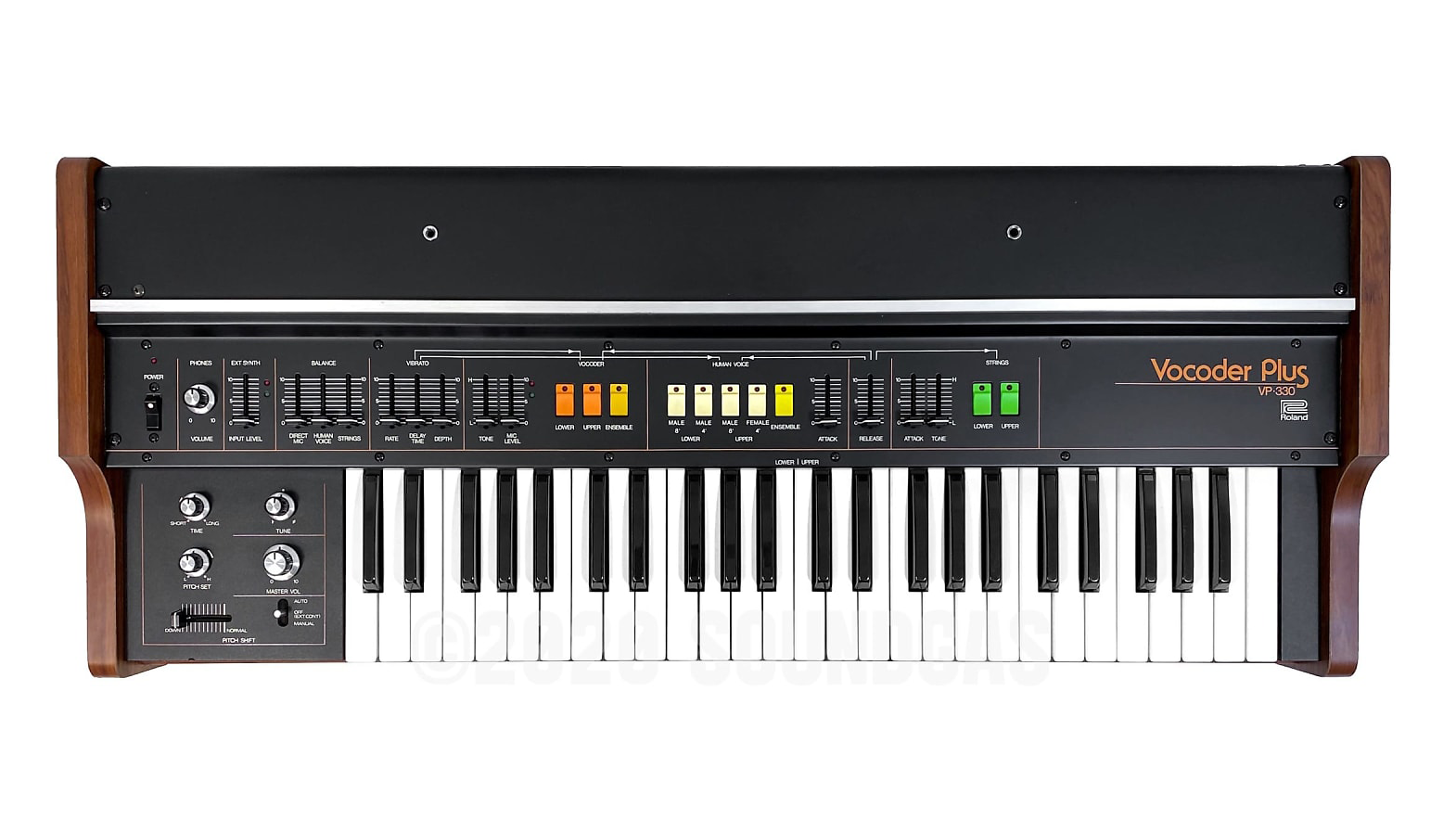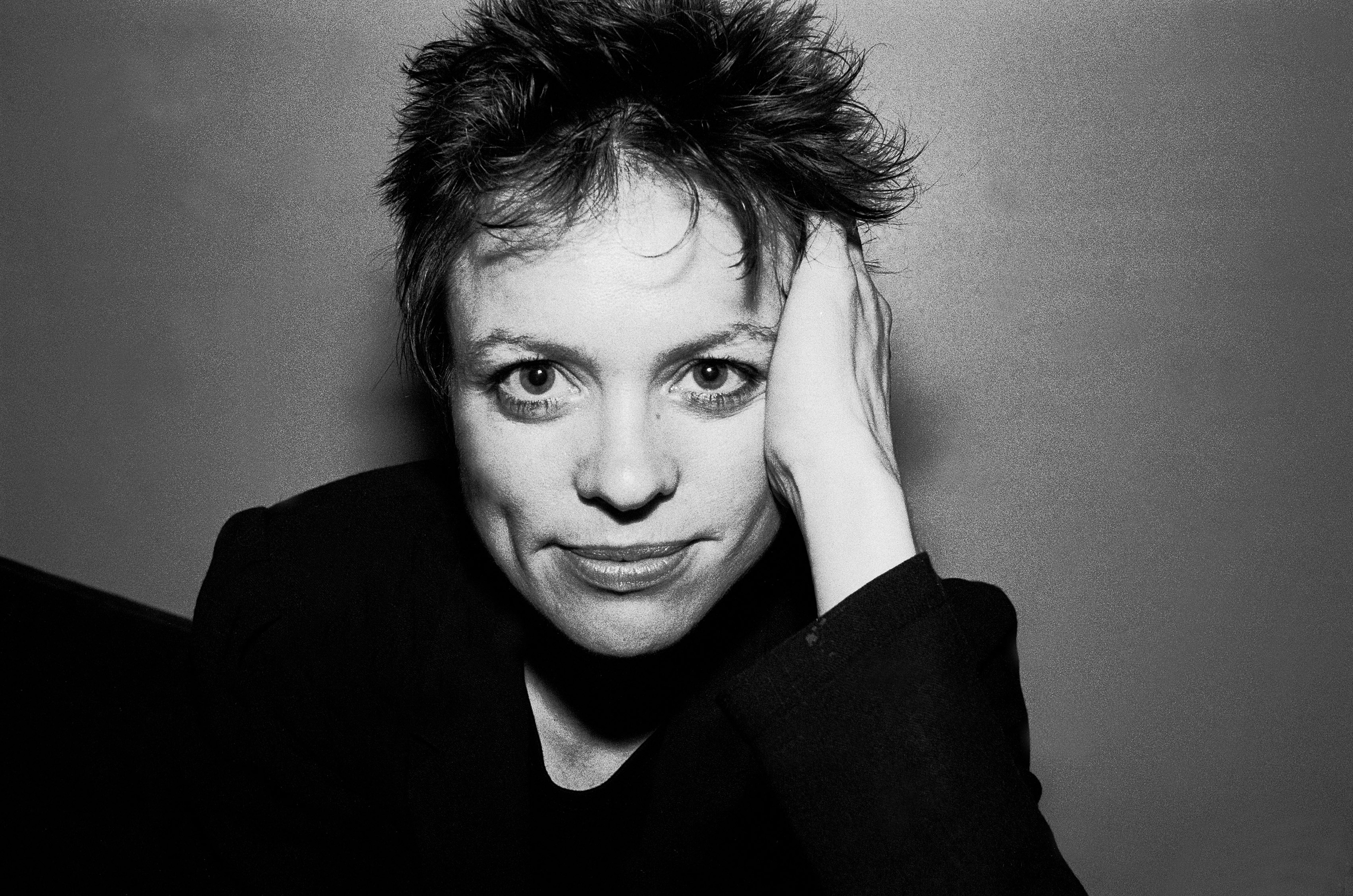Good evening. This is your Captain. We are about to attempt a crash landing. Please extinguish all cigarettes. Place your tray tables in their upright, locked position.
So goes the opening of From The Air, the opening track of Laurie Anderson’s debut full-length studio album, Big Science. Atop driving vocoder-generated loops paired with a drum sound more prescient of Portishead than it is demonstrative of pop music in 1982, these lines are in many ways a microcosm of multitudes when it comes to Anderson’s astonishing sound and career.
Lyrical rhythms of familiar exchanges, in this case a pilot’s address over the plane announcement system, are simultaneously celebrated, cross-examined and deconstructed, smashed into the surreal and exploded into both the past and the future.
The vocoder, a Roland VP-330 Vocoder Plus, which Anderson manages to divorce from its science fiction associations while still making reference to a particularly sinister side of retro-futurism, simultaneously emphasises the voice as her weapon while synthetically tearing it to pieces. Science is still the name of the game, but fiction it is not.
This all, of course, follows a characteristically unassuming, avuncular welcome: “Good evening. This is your captain.” Because from the moment we press play or drop the needle onto Big Science, it’s Anderson in charge. With her live shows falling somewhere between the poles of concert, lecture, surreal comedy routine and dance recital, hers is a world that’s as absurd as it is disconcerting.
“Everything, when you actually break it down, is bizarre. And unlikely. That’s my lens, I think: ‘unlikely’,” Anderson told the contiguously-named Anderson Cooper in a ‘60 Minutes’ interview in 2022. “With a gun to my head, I say, ‘I tell stories’. Those look like paintings sometimes, they look like songs, they look like films… they’re just stories!”

Indeed, the mantle of ‘stories’ might just be the only way to unify Anderson’s career portfolio, so varied is her output across visual media, performance art and spoken-word poetry. In 2021 Washington DC’s Hirshhorn Museum and Sculpture Garden hosted Anderson’s largest ever exhibition of artworks; consisting of video, performance, installation, painting and more; all while Anderson was also lecturing as the Charles Eliot Norton Professor of Poetry at Harvard.
Big Science’s own story is really the story of Laurie Anderson. While career-defining debut albums often represent a precocious burst of musical talent that both touches a cultural nerve and enamours the music industry, Big Science feels more like an accidental pop success, hewn from the mind of an off-the-wall creative ensconced in the New York art scene of the 1970s and ‘80s.
Anderson, born in 1947 in Illinois, would alternate playing violin with the Chicago Youth Symphony with painting at the local Art Institute. Relocating to New York in 1966 to study art at Barnard College and then Columbia University, she began to explore working with film, music and performance. Early pieces included 1973’s Institutional Dream Series, which saw Anderson fall asleep in public places and document their effects on her dreams, and 1974’s Duets On Ice, which she also took to Italy, delivering street performances in Genoa.
"I talked about the parallels between skating and violin playing. Blades over a surface— and about balancing, and what it means to play a duet with yourself"
With her home-made Self-Playing Violin in hand, an instrument made to play back string loops from within its body to accompany Anderson’s live playing, Duets On Ice saw the artist don a pair of ice skates whose blades were encased in blocks of ice. When the ice finally melted and caused Anderson to lose her balance, the piece was over. “I talked about the parallels between skating and violin playing,” she later told Rolling Stone. “Blades over a surface— and about balancing, and what it means to play a duet with yourself.”
Fast forward to May 11, 1980: at Irving Plaza Anderson debuted what would become her most widely recognised song to this day: O Superman. O Superman. O Judge. O Mom and Dad, she would growl through the VP-330 over a looped ‘ha-ha-ha-ha’ of her own voice — and on Mother’s Day, of all days.

Written in the wake of the 1979 hostage crisis in Tehran, the song was recorded with Canadian producer Roma Baran, otherwise known for her work with artists such as folk singer Rosalie Sorrels and Wailin’ Jennys Annabelle Chvostek. Anderson and Baran would go on to make several records together, including the 1986 live album Home Of The Brave, 1989’s Strange Angels and 2010’s Homeland, three decades after first working together.
The lyrics are a one-sided conversation, like a prayer to God […] I wanted it to be like a Greek chorus – not just one voice – so I used a vocoder
"We were left with dead bodies,” Anderson later remembered. “A pile of burning debris and the hostages nowhere to be seen. So I thought I’d write a song about all that and the failure of technology. I’d just heard this beautiful 19th-century aria by Massenet that began: “O sovereign …” It was a prayer to authority, which I thought was interesting, so I started writing: “O Superman …” The lyrics are a one-sided conversation, like a prayer to God […] I wanted it to be like a Greek chorus – not just one voice – so I used a vocoder, which was originally developed as a spy technology to disguise voices. It fitted the concept.”
In 1981, the song was pressed to 1,000 copies via microlabel One Ten Records. “I was a performance artist with no interest in the pop world,” Anderson said, “but friends convinced me to make a single, initially mail order.” Her erstwhile production manager B. George had found favour with legendary British radio DJ John Peel, and first played O Superman upon being invited by Peel to guest DJ on his show in August of that year.

“I think [John Peel] heard it the first time live that evening,” George later remembered to Alex Reed, author of Laurie Anderson's Big Science. After finding its way onto the shows of DJs such as Simon Bates and Dave Lee Travis, “It went to breakfast radio, which means that every mom in England knew the song.”
It wasn’t long before Anderson began garnering more attention from the music industry proper. One distributor requested 80,000 copies of the single. Roma Baran would also play a role in helping Anderson secure a formidable eight-record deal with Warner Brothers, who in turn saw O Superman into the charts of sixteen countries and, with the help of John Peel, into the number two slot in the UK chart.
It was a kind of national anthem, it was also a kind of weird, warped lullaby.
It would also find its way into Peel’s diminutive private collection of 143 favourite singles, subject of a 2005 Channel 4 documentary. “He gave it a chance for a lot of people to hear it,” Anderson said in the film. “And I would never get that chance in the United States. Ever. It was a kind of national anthem, it was also a kind of weird, warped lullaby. To be one of the records in this small box… it makes me so happy, it almost makes me sad.”
In 1982, the year the personal computer was named Time Magazine’s Man Of The Year, Big Science arrived as a full-length LP with O Superman as its talisman. With Oberheim OB-Xa synths, Farfisa organs, bagpipes, woodwind, accordions and of course Anderson’s signature Roland VP-330, the album is a masterwork of performative and experimental musicianship.
“Painters can just call their next show ‘recent work’”, laughed Anderson in a 2021 interview. “But musicians can never do that. They have to come up with a label for each thing they’re doing.” Perhaps this is why Anderson’s debut presented itself as more like a fine artist’s survey of recent work than a musician’s studio album.
A selection of cuts from what was then a work-in-progress, United States I-IV, the prospect of Big Science thrust Anderson into a world requiring her to do what few artists of her ilk had done before her: assume a musical persona. United States was an epic, eight-hour performance piece comprised of no less than 78 separate segments - musical, spoken, or both - expressing what Louis Menand of ArtForum magazine labelled at the time: “a mild neurosis about living in a world filled with airplanes and answering machines.”
"I’m not an artist to make the world a better place. This is not my goal, at all. Except… like, secretly"
Anderson would later recount how her branding as an artist was, for all intents and purposes, an afterthought. The cover of Big Science, even, was simply a photograph taken by a friend on the set of United States. “Branding myself: that was the idiotic, fun, silly thing that I was not serious about creating,” Anderson told comedian Adam Buxton in 2021. "The image was… stupid! Just, a joke! But the work was not a joke. I did not write that music as a joke.”
So while Big Science was Laurie Anderson’s debut album, it was in essence also a kind of proto-best-of; a ‘selected works’ from an already epic body of work, whose own live album, United States Live, would follow in 1984. Bold, experimental and intimately emotional in equal measure, this accidental success story - “a real fluke,” as Anderson would describe it to Buxton - continues to occupy a category of its own.
“I’m not an artist to make the world a better place. This is not my goal, at all. Except… like, secretly,” Anderson told Cooper for 60 Minutes. Thanks to Big Science, a masterclass in experimental world-building infused with the spirit of its time, that secret is out.







